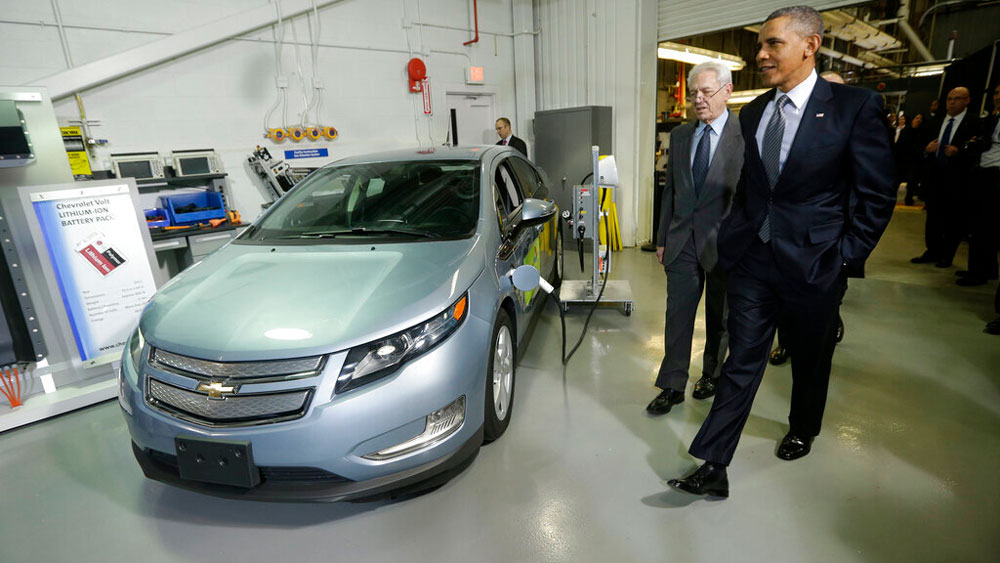Illinois scientists set ambitious goals for battery development. How has the effort fared?

President Barack Obama and Joint Center for Energy Storage Research Director Dr. George Crabtree walk past a hybrid Chevy Volt vehicle used for testing during the president's tour of the Argonne National Laboratory in Argonne, Ill., Friday, March 15, 2013. Argonne is the first US science and engineering research national laboratory, and it remains on of the nation’s largest. AP Photo/Pablo Martinez Monsivais
About 10 years ago, a new hub for green energy innovation was announced in Illinois, and the scientists there set themselves an ambitious goal of creating batteries that were "five times more powerful, five times cheaper, within five years."
Much has changed in battery technology since then, so The 21st invited two of the researchers to update us on where the we stand in the endeavor to improve battery technology.
To read about the start of Illinois' "battery moonshot," click here.
GUESTS:
Venkat Srinivasan
Deputy Director, Research and Development • Joint Center for Energy Storage Research (JCESR) | Argonne Collaborative Center for Energy Storage Science (ACCESS) | Argonne National Laboratory (Lemont, Illinois)
Paul Braun
Professor and Grainger Distinguished Chair in Engineering, Director of Materials Research Laboratory, University of Illinois Urbana-Champaign
Prepared for web by Owen Henderson
Help shape our coverage on The 21st by joining our texting group and answering weekly questions. To join, text “TALK” to 217-803-0730 or sign up with your phone number below:

